The AYANEO AM02 is a Mini PC for Triple-A 1080p gaming, clearly inspired by the Nintendo NES.
AYANEO's second mini-PC is an intriguing device. Like its smaller sibling, which I reviewed here, this tiny PC comes in a beautiful retro design — inspired by the Nintendo Entertainment System, aka NES.
But unlike the AM01, it comes with more ports and a built-in touchscreen and packs a much more powerful chip, changing how this device is supposed to be used. (It's also more expensive, starting at $499 for a barebones version without memory and storage and going up to $769 for 32GB of RAM and a 1TB SSD, which is what I use.)
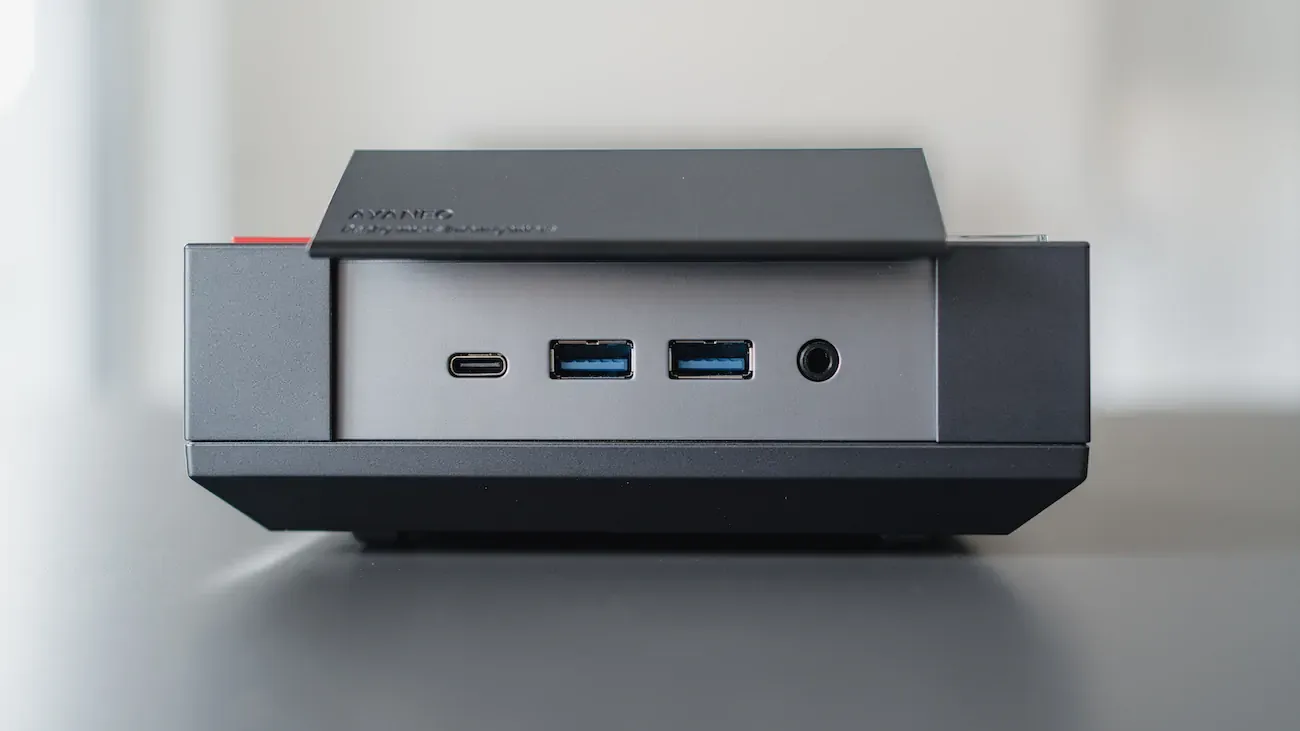
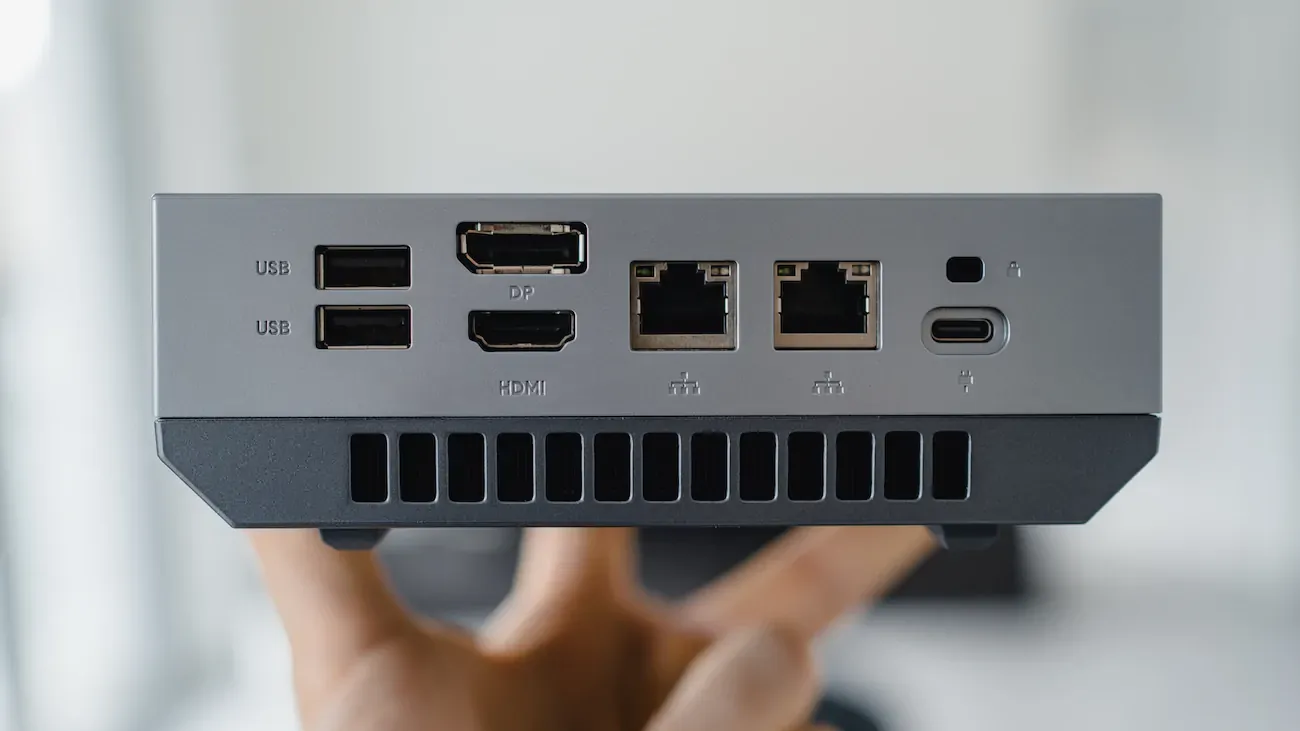
Ports for days
I've been testing the device for the last couple of weeks in different scenarios (AYANEO sent me the review unit, but like always, no money exchanged hands, and they had no impact on this review). And to spoil this review a little, I have at one point wondered if I should replace my gaming tower PC with the AM02.
But let's start from the beginning.
A familiar performance
The AM02 is the second entry in AYANEO's Mini-PC line-up. However, it is a much more powerful device than the Macintosh-inspired AM01, thanks to the AMD 7840HS APU.
That number should ring a bell if you've been reading my other reviews. It is, after all, currently the chip used in all the major handhelds, be it from companies like AYANEO or GPD or even bigger players like Lenovo or ASUS (the AMD Z1 Extreme is nearly the same chip, only optimized for handheld gaming). The only difference between the 7840U used in handhelds and the 7840HS used in this device is that the latter is optimized for performance vs efficiency.
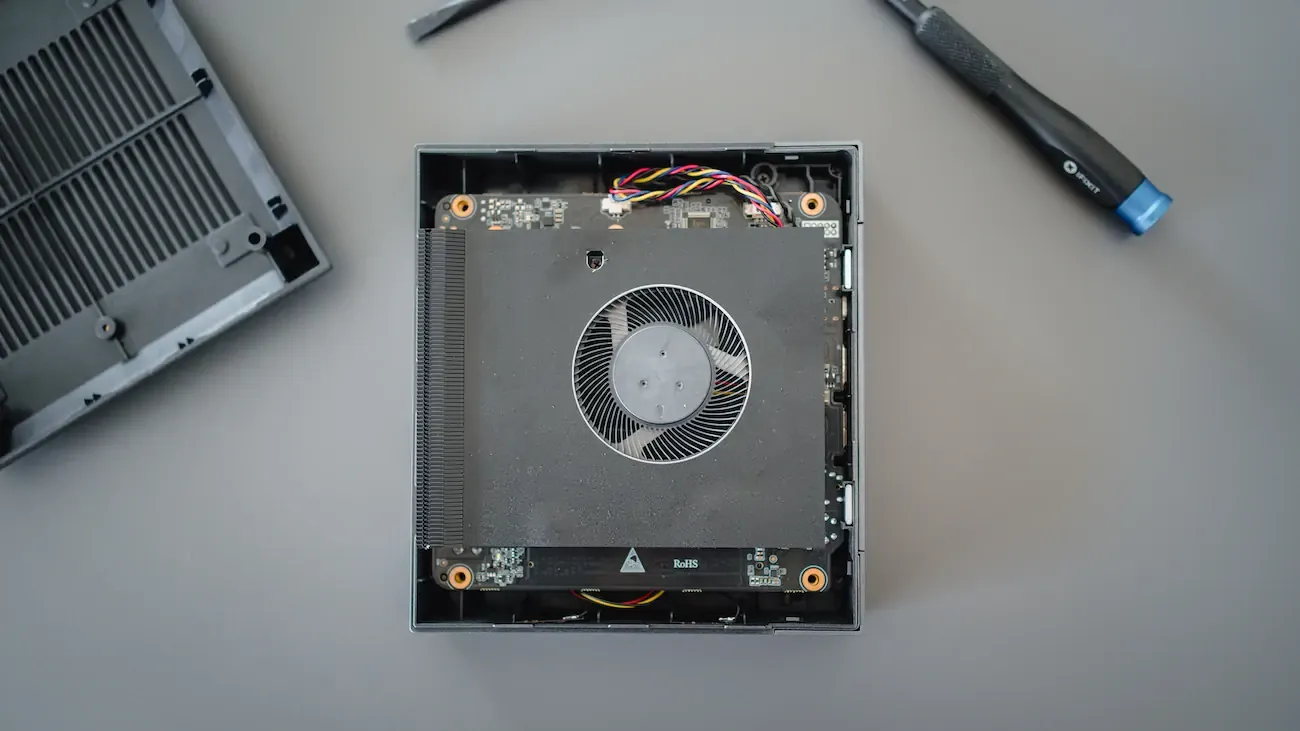
But unlike the chip used in these handhelds, the 7840HS doesn't rely on battery, so you can effortlessly crank the TDP to the maximum and keep it locked — all you then have to worry about is fan-noise (and believe me, if you play a recent Triple-A game at max TDP, you will hear the fan spin.)
Thanks to that chip, the AM02 is a different beast from its sibling. In my review of the AM01, I argued that due to the lower-powered chip, the AM01 thrives at emulation and streaming thanks to cloud-based services like GeForce Now or local in-home streaming via Moonlight.
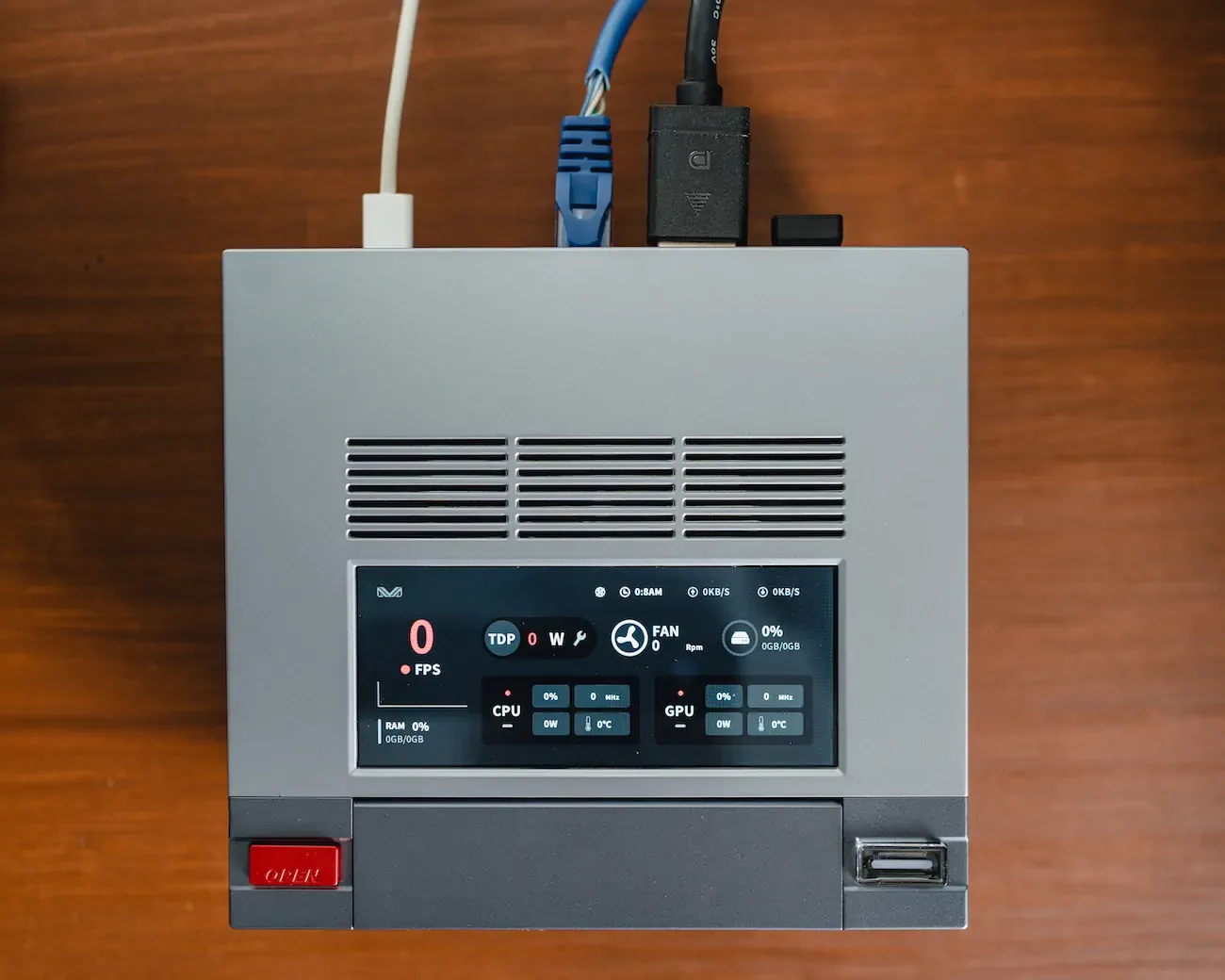
But the AM02 takes it up a notch, and you can easily play most games at 1080p at medium to high settings. Playing Cyberpunk 2077 on the AM01 would have been a nightmare, but on the AM02, it's straight-up enjoyable.
Of course, the size alone should make it clear that this is no PS5 or Xbox Series X replacement, but having access to my Steam library on a device this small, without needing any internet connection, is a game changer. You can rest assured that I will bring the AM02 with me next time I visit family and hook it up to the family TV.
Also, a parenthesis about emulation: if you own any handhelds using a 7840U, you know this chip can run most emulators, including PS3 and Switch. PS3 games, a hard system to emulate, run decently on the AM02 at native resolution, with only some hiccups.
Retro-Inspired
The NES clearly inspires the AM02. I mean, just look at it.
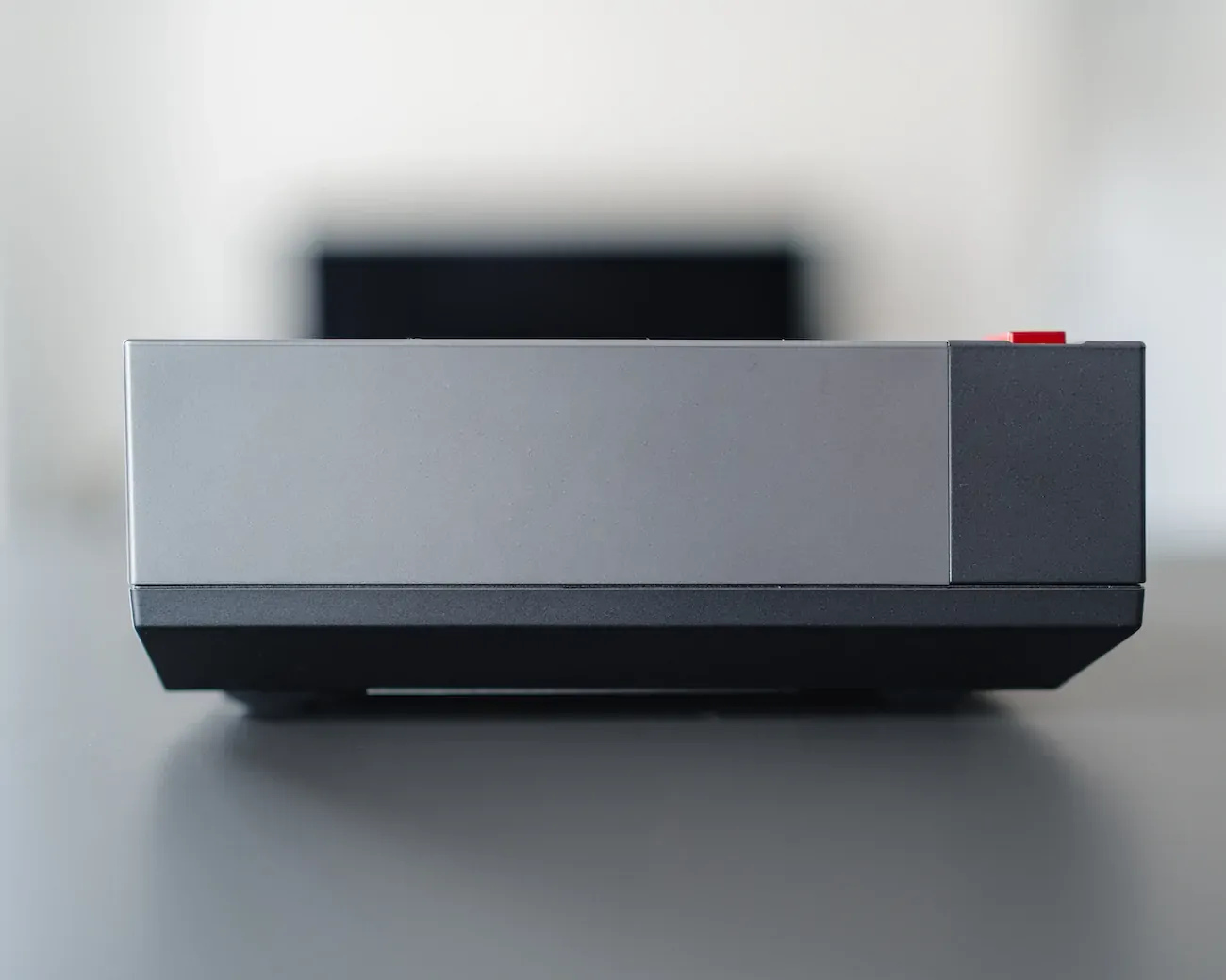
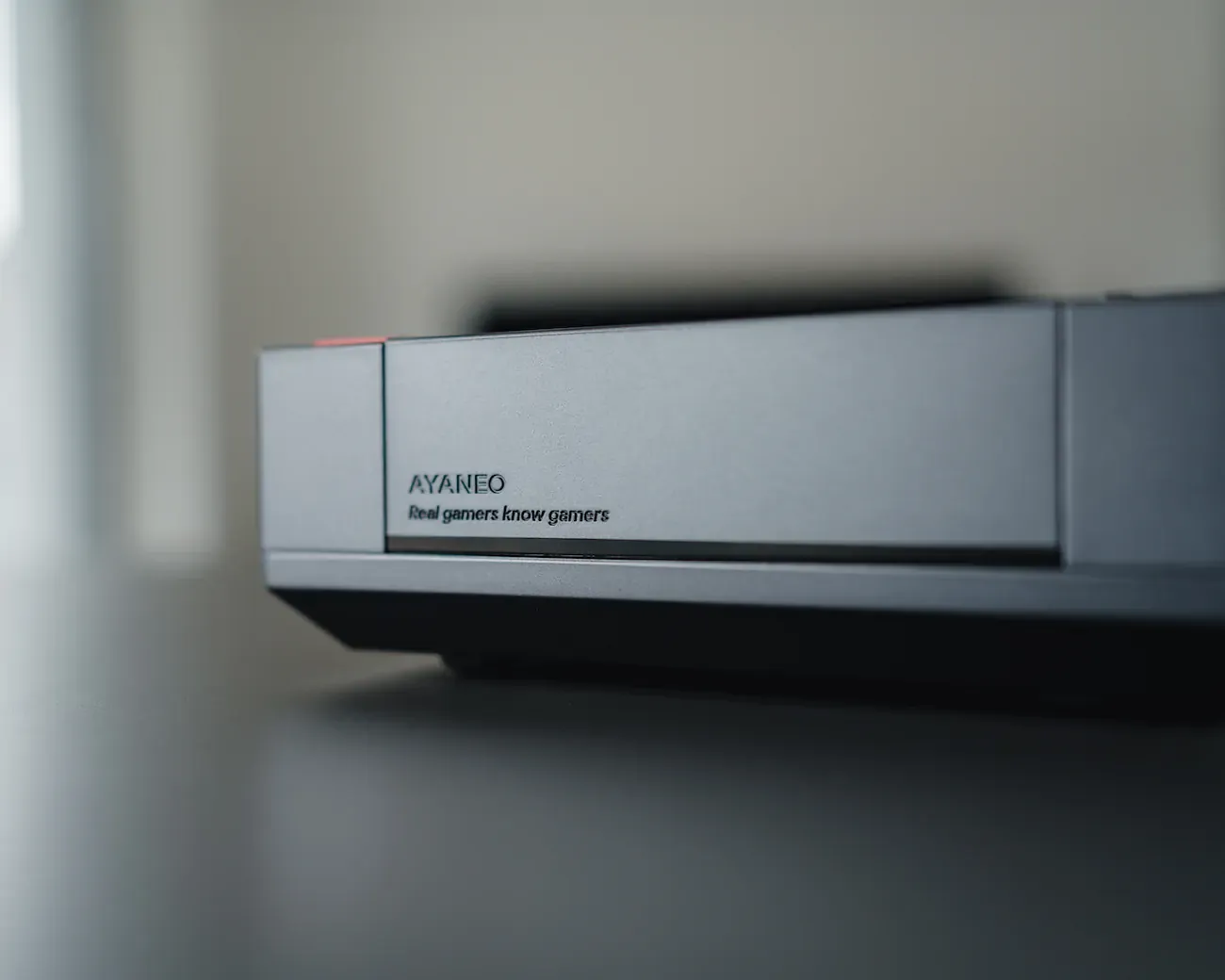
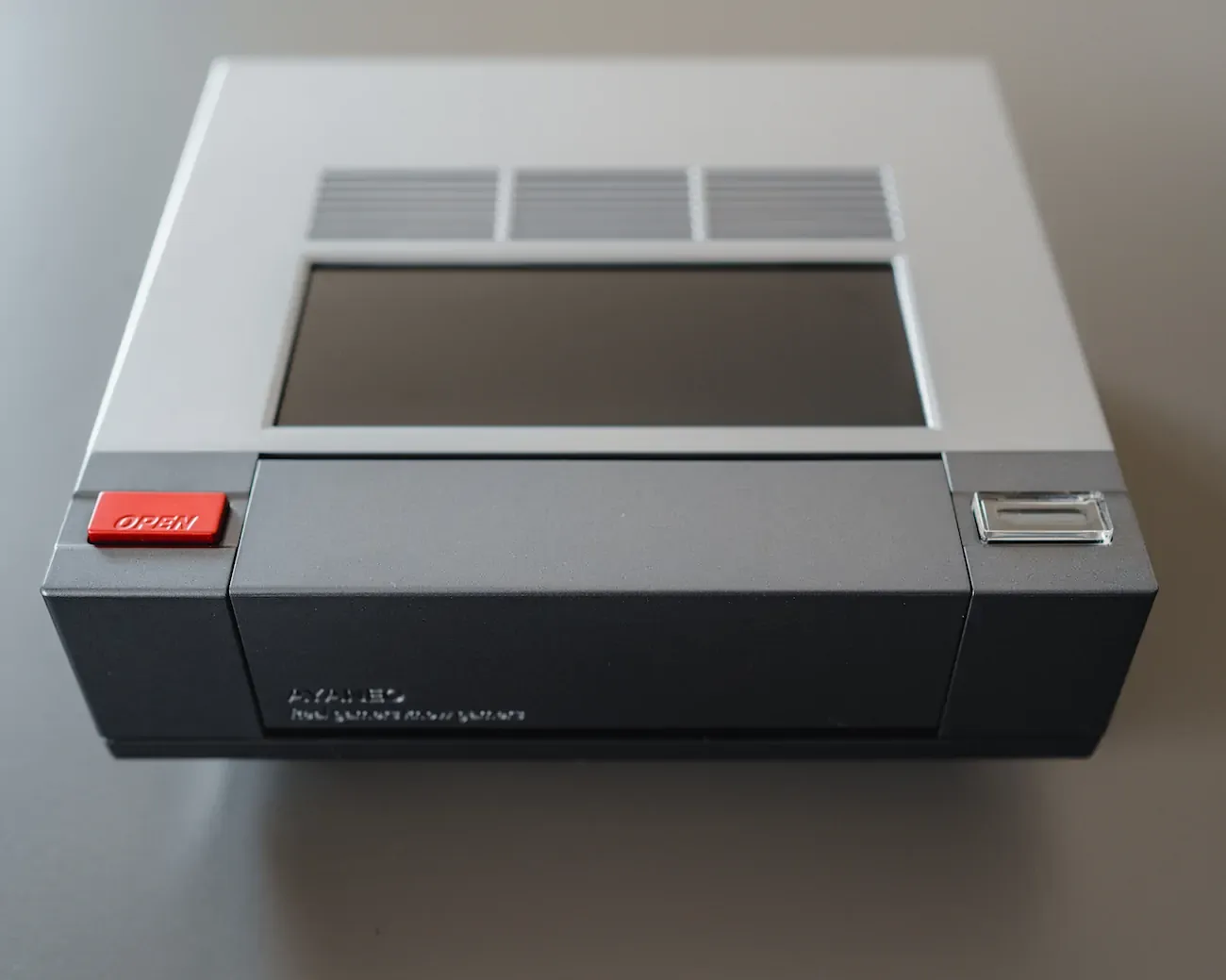
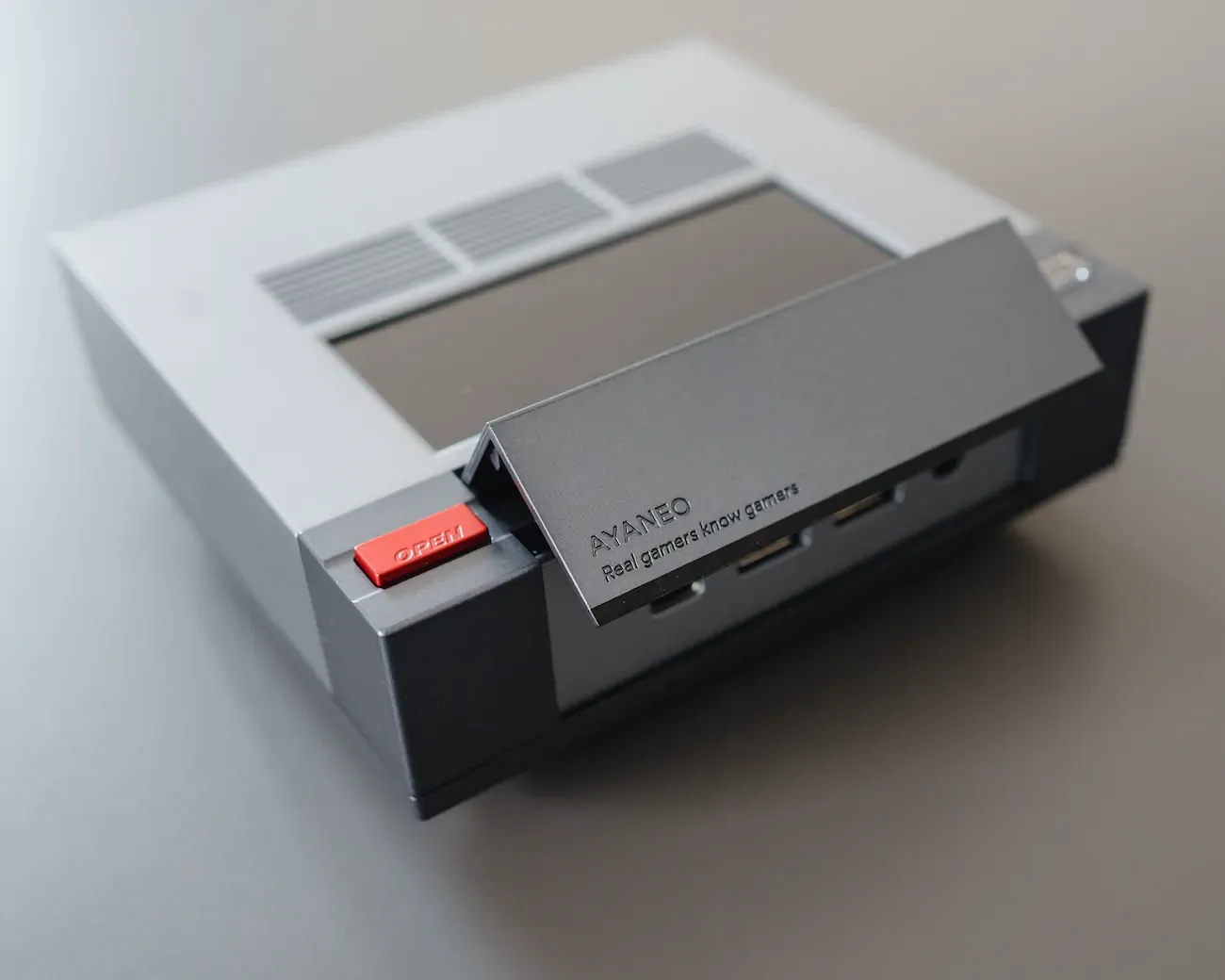
But it's still a Mini-PC, so it comes with your typical PC features and then some. Hidden underneath the front flap, you'll find a USB4 port (more about that in a second), two USB-A 3.2 ports, and a headphone jack. Around the back, you'll find two standard USB-A ports, one DisplayPort version 1.4, one HDMI 2.0 port, two LAN ports (1Gbps and 2.5Gbps, respectively) and a USB-C power socket.
I especially find the USB4 intriguing. USB4 has a maximum bandwidth of 40 Gbps. While it's still far from the 128 Gbps supported by something like OcuLink (or the upcoming ThunderBolt 5), it's on par with ThunderBolt 3's 40 Gbps, making it compatible with ThunderBolt 3 eGPU enclosures.
I have to admit, combining this tiny PC with an optional eGPU intrigues me a lot. It makes me wonder if this tiny PC could replace my Gaming tower, which uses a 5600X and an RTX 3070. (I have a Razer Chroma X on its way to me, so if you want to read that test/review, subscribe to the newsletter.)
A nice gimmick, but still a gimmick
One of the other peculiarities of the AM02 is the integrated touchscreen at the top of the device. It has multiple features, thanks to AYASpace 2.0. You can display a screensaver and information like the weather or use it to change the FPS settings, fan speed, and more directly on the device.
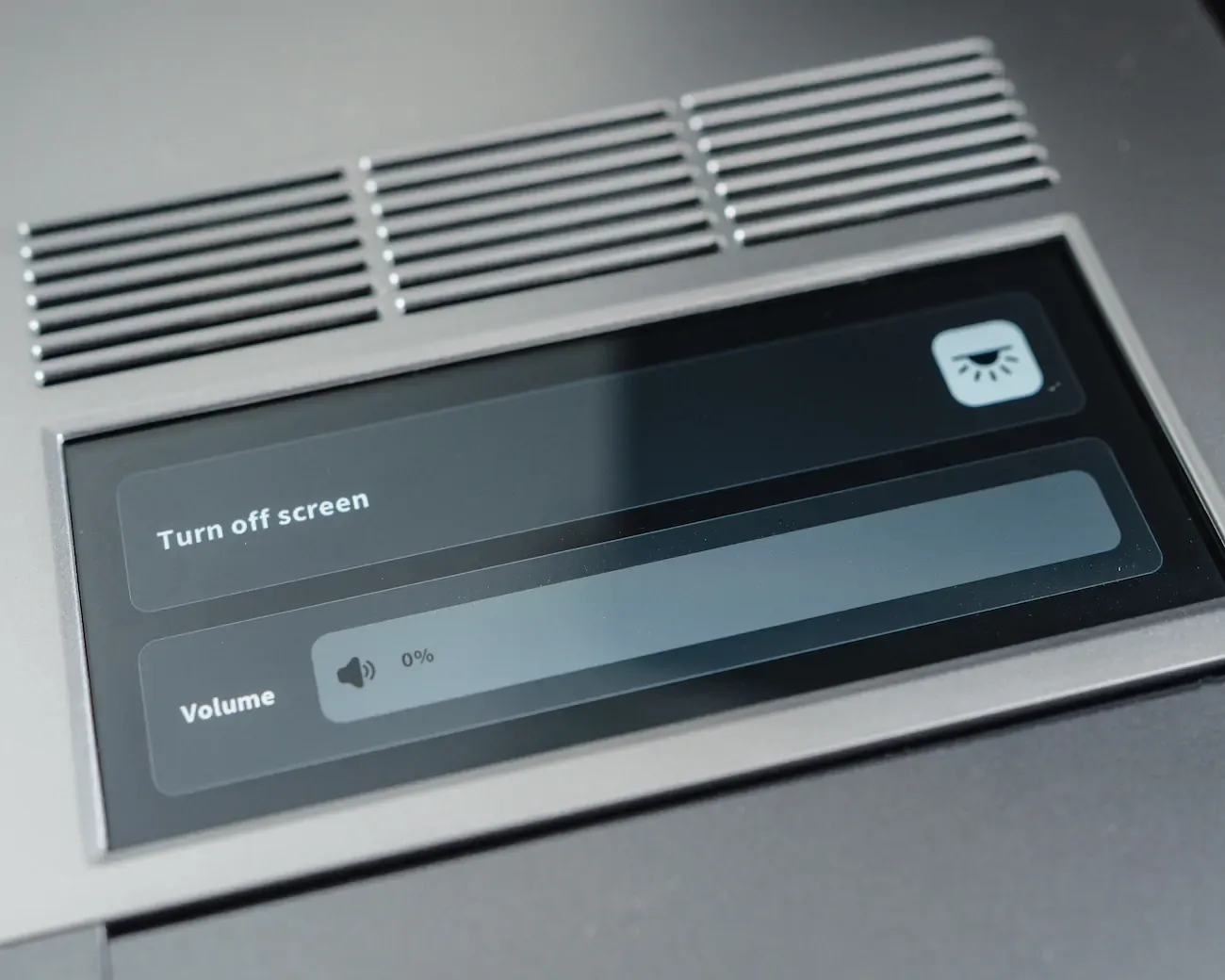

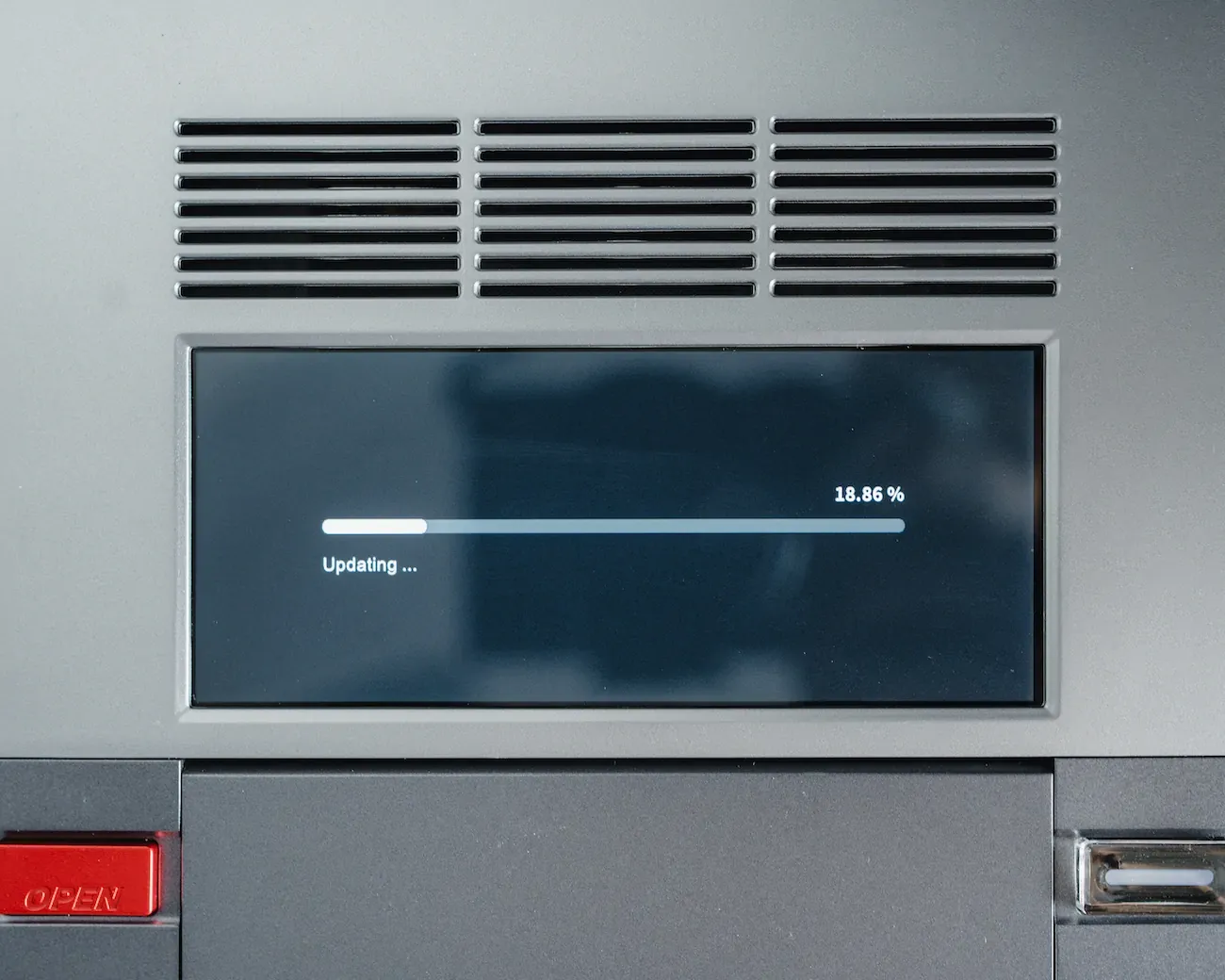
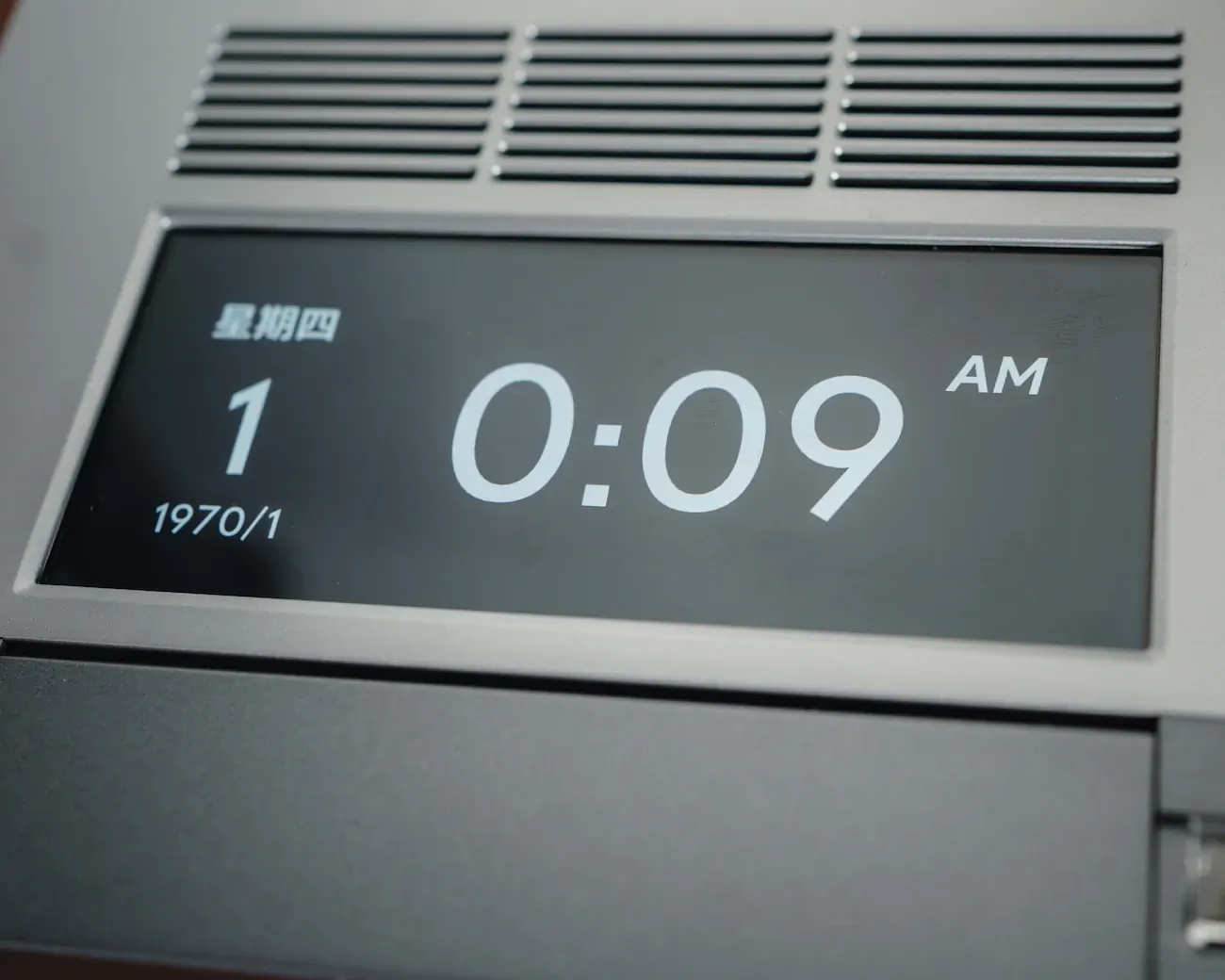
On first startup, the AM02 goes back to the future.
I must admit that while it looks fantastic, it's mostly a gimmick. I have mine display the FPS counter, which is a helpful feature but not a necessary one – since you can also simply run something like RTSS.
I wonder if this screen allowed AYANEO to test these capabilities and later reuse that feature in the FLIP DS.
A niche device for niche needs
In my daily life, I use many different devices for many different purposes: I switch between handhelds (mainly between the ROG Ally and the Steam Deck OLED) to play games on the couch and hooked up to a TV when on the go. I have a powerful but ageing Gaming PC for mouse-keyboard-based games and streaming games to other devices. I also have a PS5 and a Switch for couch gaming, and so far, I have an AM01 to stream games from the cloud and home to play them on my TV.
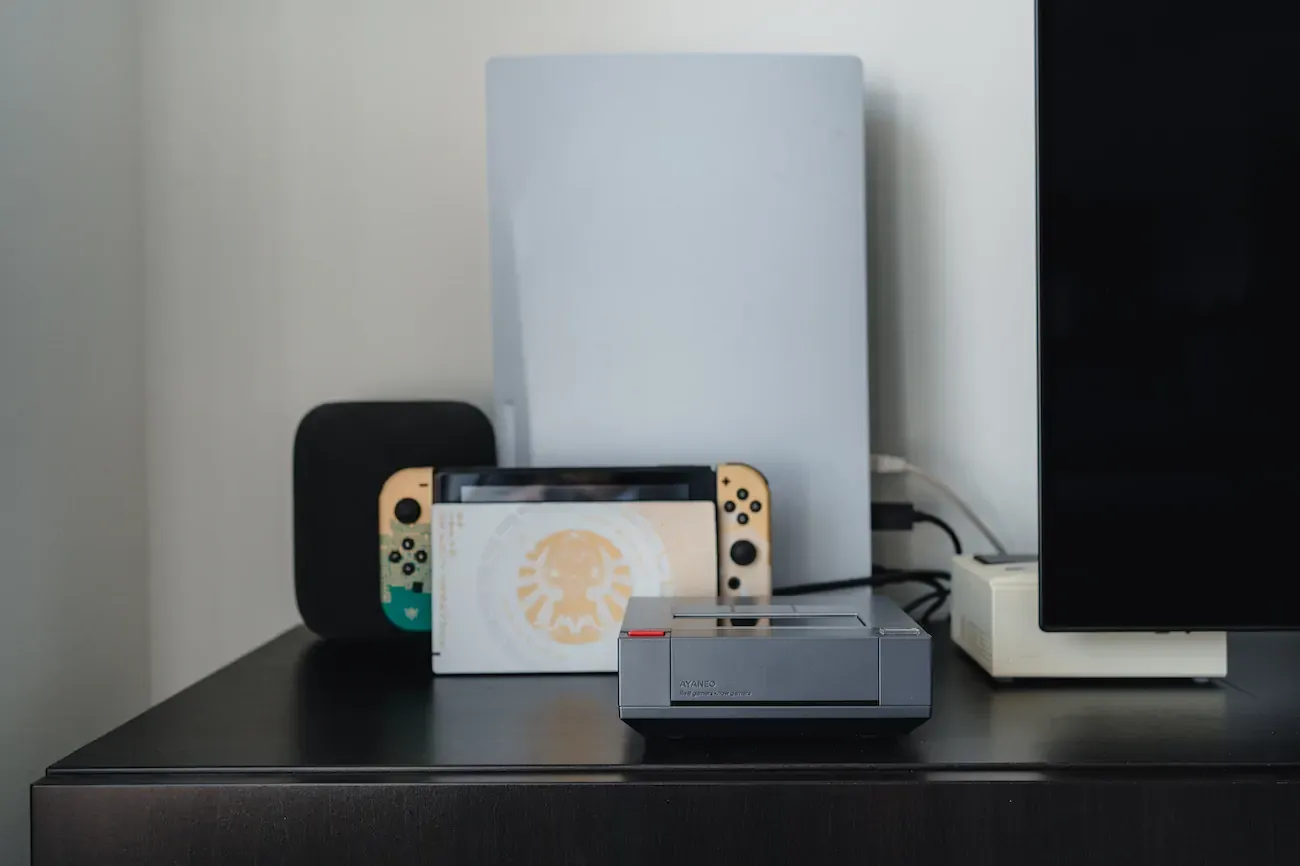
The AM02 somehow lives amid all these use cases. It can run most of my mouse- and keyboard-based games while sitting at the desk. It can be a portable console for native 1080p Triple-A gaming and high-end emulation hooked to a TV. Mixed with an eGPU, it should even run games at 4K.
I guess that is the beauty of Mini-PCs. Sure, you can get a handheld doing some of these things for slightly more money but less power if you value portability. Or, for a similar price, you can get a more powerful, although much larger, PC. But the AM02 does most of it in a form factor that fits in the side pockets of my backpack.
Which is why I see myself using this device in the future. It fits neatly in between all of the use cases I mentioned above. It frees my handhelds to be precisely that, handhelds and allows me to play games natively on the TV without relying on any streaming service.
And, like I mentioned a few times, I'm looking forward to figuring out what this can do hooked up to an eGPU.
You can find the AYANEO AM02 on Indiegogo starting at $499 for a barebones version, but I'd recommend you look at the version with 16 GB of memory and 512 GB of space for $529. (The AM02 ships with a power brick, adapters for most countries, tools to open it up and a HDMI cable.)



